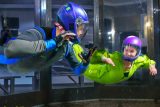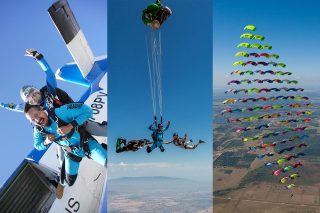
Stay Connected
Get personalized newsletters tailored to your interests! Choose from tandem skydiving, indoor skydiving, fun jumper events, or happenings at the Bombshelter Restaurant and Bar.
Posted by: Skydive Perris
7 years ago
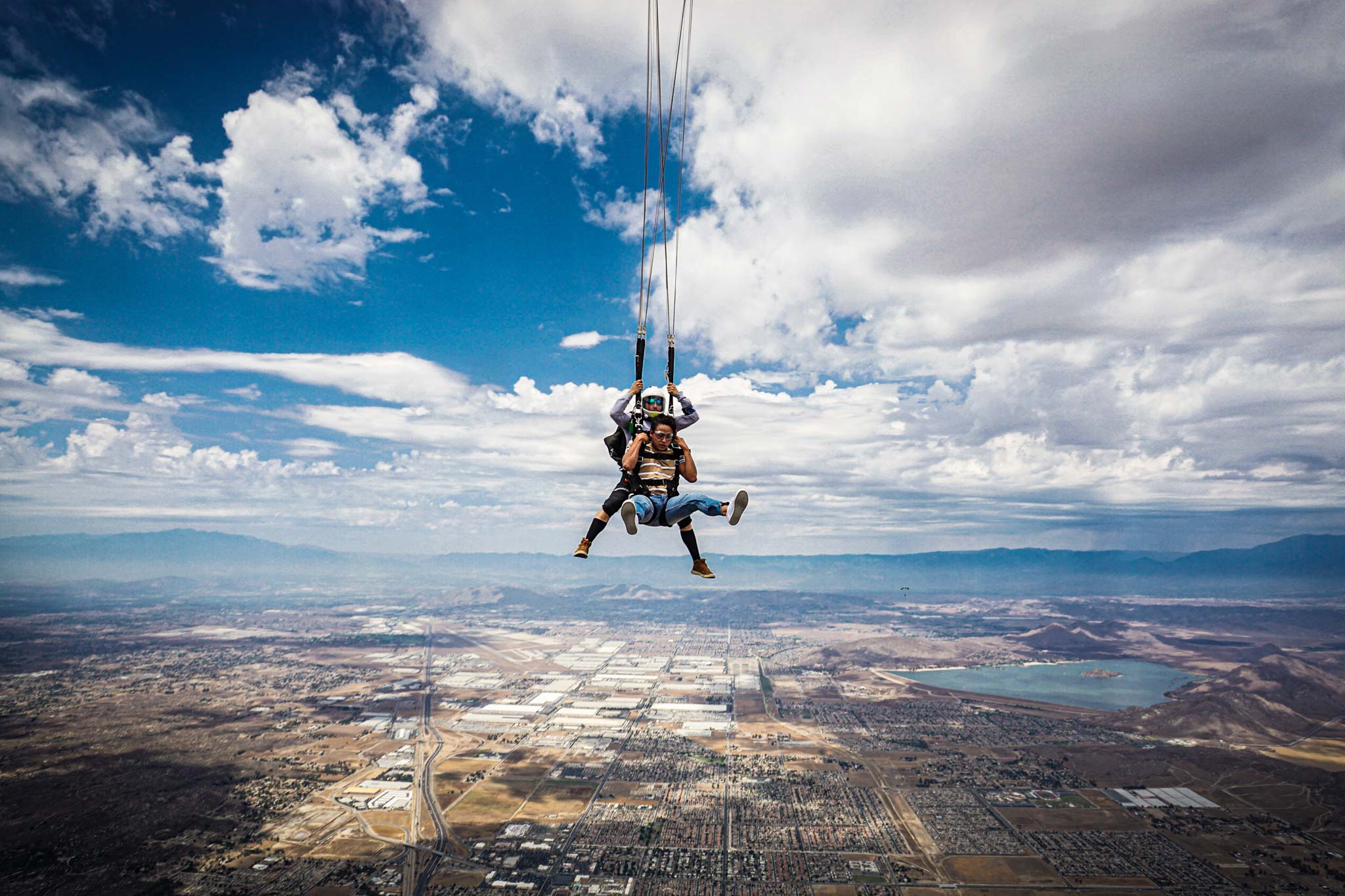
Some people have a need for speed! They thrive in the hustle and bustle, and it’s even pretty likely they will exceed the speed limit by a minimum of 10 mph as often as they can (don’t worry we won’t tell). This type wants the rush, and their ears perked when they heard that 120 mph is how fast you are going when skydiving. On the other hand, you have the more tentative types, who get sweaty-palmed and nervous at the thought of zipping through the sky at speeds quite that high.
It seems the freefall portion of a skydive is one of the most anticipated, feared, and misunderstood parts of the skydive. We don’t want you going into the experience unprepared and unaware, so here are some facts you should know about skydiving freefall:
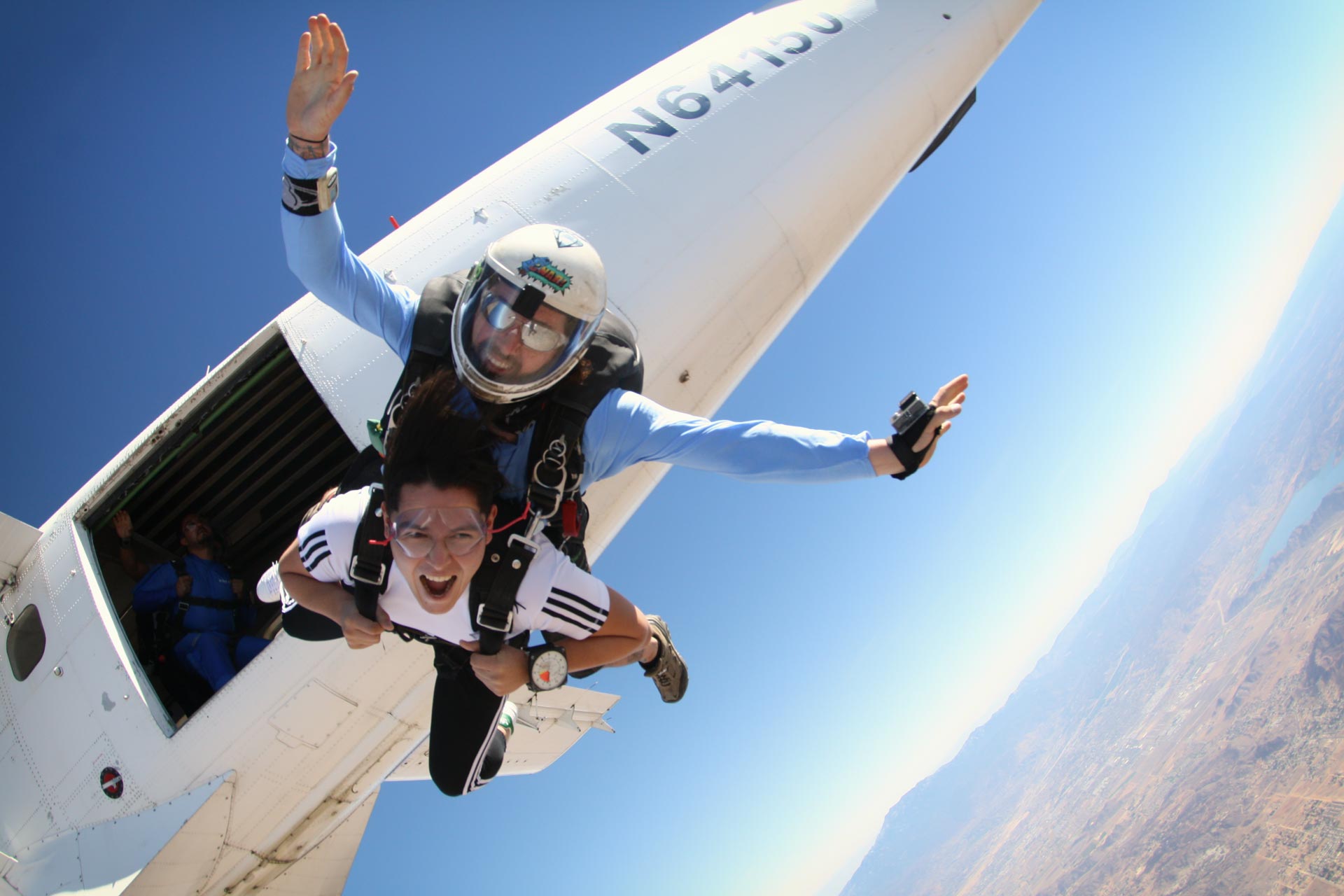
How fast you’re going in freefall is predictable thanks to modern parachuting technology and physics. Without the technology we have today, a pair of people on a tandem skydive would get moving pretty fast. We are talking close to 200 mph! This would make for a pretty uncomfortable transition when the main canopy was deployed. To resolve this, modern skydiving systems utilize a drogue parachute. This is like a mini parachute for your main parachute. The drogue is deployed shortly after exit and creates drag to help decrease the terminal velocity reached by the jumpers. This decrease in terminal velocity slows their fall enough to ensure a softer opening of the main canopy when the time comes. It also builds in some time to your skydive (which is a definite plus) allowing you to enjoy stunning aerial views of Southern California. If you are wondering just how long you fall when skydiving, at Skydive Perris you reach an altitude of about 12,500 feet and can expect a glorious 45 seconds of freefall!
Now, here is where physics comes in. We mentioned terminal velocity. Unless you’ve recently refreshed yourself in a high school science class or are taking a physics lecture, you might be scratching your head wondering just what that is. Well, terminal velocity on a skydive is a constant speed that is reached when the force of gravity on an object is balanced by the resistance of the air while the object is in freefall. Once an object (here a tandem pair) reaches terminal velocity there is no further acceleration!
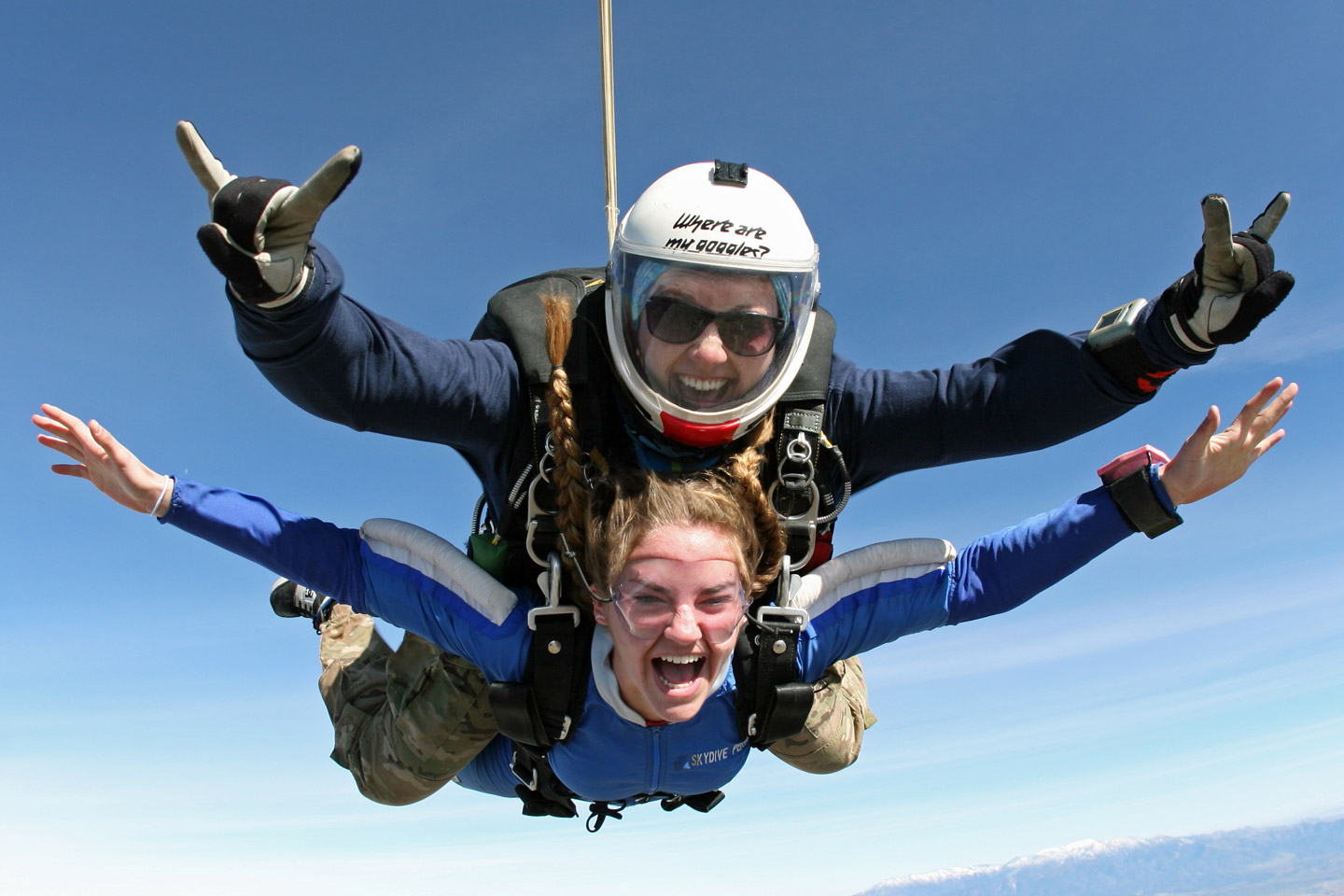
Now, we know that sounds crazy! Just give us a chance to explain. When you reach terminal velocity, you don’t feel yourself falling. Really, you feel more like you are floating. This is because your brain doesn’t really have the necessary information to process the speed you’ve reached. You see, you aren’t really ‘relative’ to anything else when you skydive in our wide open blue skies. Up that high, your brain doesn’t have anything to use to triangulate its position, which is why even people with a fear of heights can enjoy skydiving.
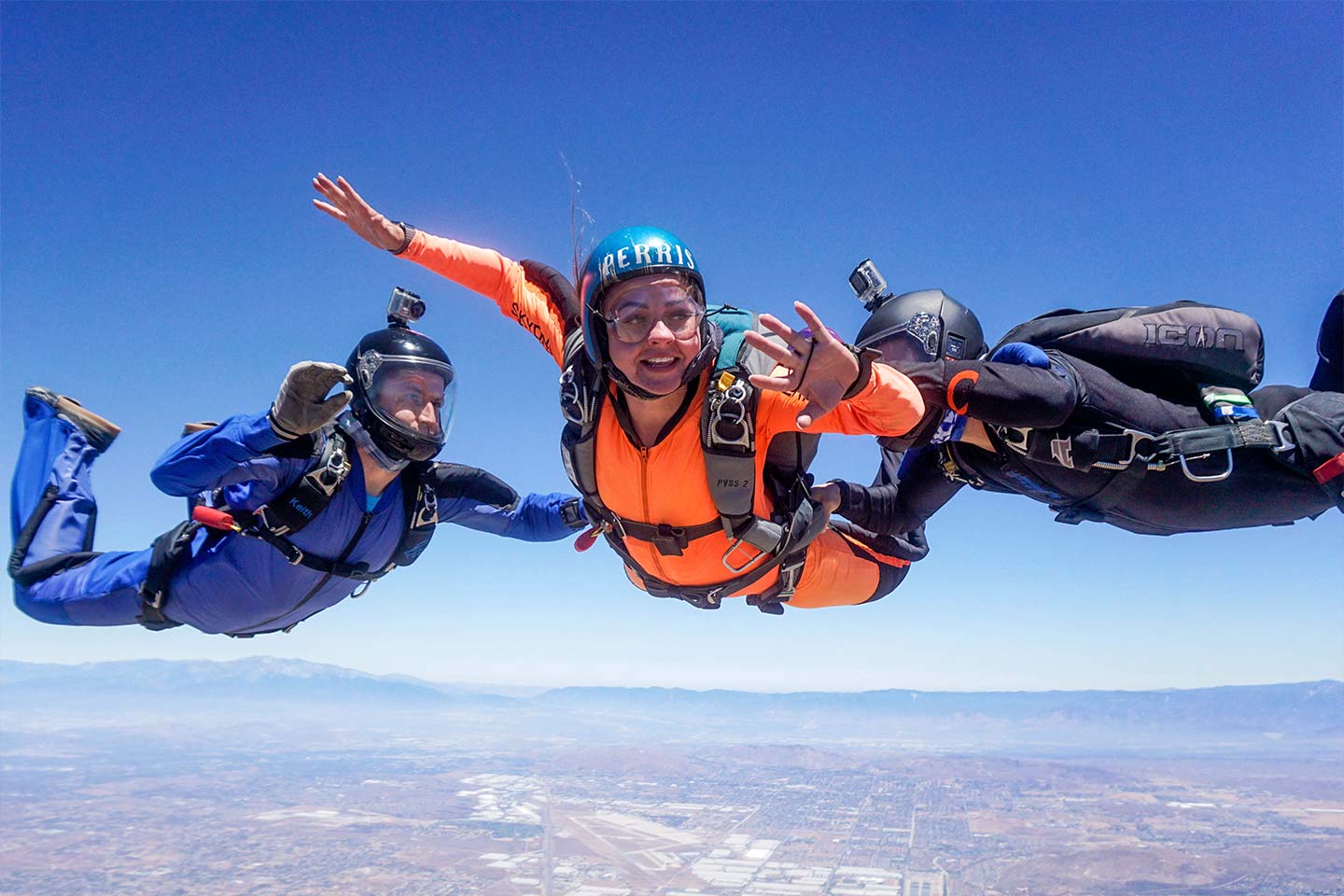
Regardless of what side of the coin you were on initially (need for speed, or filled with dread by acceleration), we guarantee the best way to reach 120 mph is via skydive!
Copyright © 2024, Skydive Perris, All Rights Reserved.
Website Design by Beyond Marketing

| Cookie | Duration | Description |
|---|---|---|
| AWSALBCORS | 7 days | Amazon Web Services set this cookie for load balancing. |
| cookielawinfo-checkbox-advertisement | 1 year | Set by the GDPR Cookie Consent plugin, this cookie records the user consent for the cookies in the "Advertisement" category. |
| cookielawinfo-checkbox-analytics | 11 months | This cookie is set by GDPR Cookie Consent plugin. The cookie is used to store the user consent for the cookies in the category "Analytics". |
| cookielawinfo-checkbox-functional | 11 months | The cookie is set by GDPR cookie consent to record the user consent for the cookies in the category "Functional". |
| cookielawinfo-checkbox-necessary | 11 months | This cookie is set by GDPR Cookie Consent plugin. The cookies is used to store the user consent for the cookies in the category "Necessary". |
| cookielawinfo-checkbox-others | 11 months | This cookie is set by GDPR Cookie Consent plugin. The cookie is used to store the user consent for the cookies in the category "Other. |
| cookielawinfo-checkbox-performance | 11 months | This cookie is set by GDPR Cookie Consent plugin. The cookie is used to store the user consent for the cookies in the category "Performance". |
| CookieLawInfoConsent | 1 year | CookieYes sets this cookie to record the default button state of the corresponding category and the status of CCPA. It works only in coordination with the primary cookie. |
| PHPSESSID | session | This cookie is native to PHP applications. The cookie stores and identifies a user's unique session ID to manage user sessions on the website. The cookie is a session cookie and will be deleted when all the browser windows are closed. |
| viewed_cookie_policy | 11 months | The cookie is set by the GDPR Cookie Consent plugin and is used to store whether or not user has consented to the use of cookies. It does not store any personal data. |
| YII_CSRF_TOKEN | session | This cookie is used a unique token that used in securing forms and other website inputs against XSS attacks. |
| __cf_bm | 1 hour | This cookie, set by Cloudflare, is used to support Cloudflare Bot Management. |
| Cookie | Duration | Description |
|---|---|---|
| currency | session | This cookie is used to store the currency preference of the user. |
| lang | session | LinkedIn sets this cookie to remember a user's language setting. |
| Cookie | Duration | Description |
|---|---|---|
| AWSALB | 7 days | AWSALB is an application load balancer cookie set by Amazon Web Services to map the session to the target. |
| Cookie | Duration | Description |
|---|---|---|
| ahoy_visit | 4 hours | This cookie is set by Powr for analytics measurement. |
| ahoy_visitor | 1 year 1 month 4 days | This cookie is set by Powr for analytics measurement. |
| CONSENT | 2 years | YouTube sets this cookie via embedded YouTube videos and registers anonymous statistical data. |
| vuid | 1 year 1 month 4 days | Vimeo installs this cookie to collect tracking information by setting a unique ID to embed videos on the website. |
| _fbp | 3 months | Facebook sets this cookie to display advertisements when either on Facebook or on a digital platform powered by Facebook advertising after visiting the website. |
| _ga | 1 year 1 month 4 days | Google Analytics sets this cookie to calculate visitor, session and campaign data and track site usage for the site's analytics report. The cookie stores information anonymously and assigns a randomly generated number to recognise unique visitors. |
| _gat_UA-* | 1 minute | Google Analytics sets this cookie for user behaviour tracking. |
| _ga_* | 1 year 1 month 4 days | Google Analytics sets this cookie to store and count page views. |
| _gcl_au | 3 months | Google Tag Manager sets the cookie to experiment advertisement efficiency of websites using their services. |
| _gid | 1 day | Google Analytics sets this cookie to store information on how visitors use a website while also creating an analytics report of the website's performance. Some of the collected data includes the number of visitors, their source, and the pages they visit anonymously. |
| Cookie | Duration | Description |
|---|---|---|
| fr | 3 months | Facebook sets this cookie to show relevant advertisements by tracking user behaviour across the web, on sites with Facebook pixel or Facebook social plugin. |
| IDE | 1 year 24 days | Google DoubleClick IDE cookies store information about how the user uses the website to present them with relevant ads according to the user profile. |
| test_cookie | 15 minutes | doubleclick.net sets this cookie to determine if the user's browser supports cookies. |
| VISITOR_INFO1_LIVE | 6 months | YouTube sets this cookie to measure bandwidth, determining whether the user gets the new or old player interface. |
| YSC | session | Youtube sets this cookie to track the views of embedded videos on Youtube pages. |
| yt-remote-connected-devices | never | YouTube sets this cookie to store the user's video preferences using embedded YouTube videos. |
| yt-remote-device-id | never | YouTube sets this cookie to store the user's video preferences using embedded YouTube videos. |
| yt.innertube::nextId | never | YouTube sets this cookie to register a unique ID to store data on what videos from YouTube the user has seen. |
| yt.innertube::requests | never | YouTube sets this cookie to register a unique ID to store data on what videos from YouTube the user has seen. |
| Cookie | Duration | Description |
|---|---|---|
| ahoy_track | session | No description available. |
| currencyBase | session | No description available. |
| currencySymbol | session | Description is currently not available. |
| landingCatalogURL | session | No description available. |
| test-third-party-cookie | session | Description is currently not available. |
| VISITOR_PRIVACY_METADATA | 6 months | Description is currently not available. |


